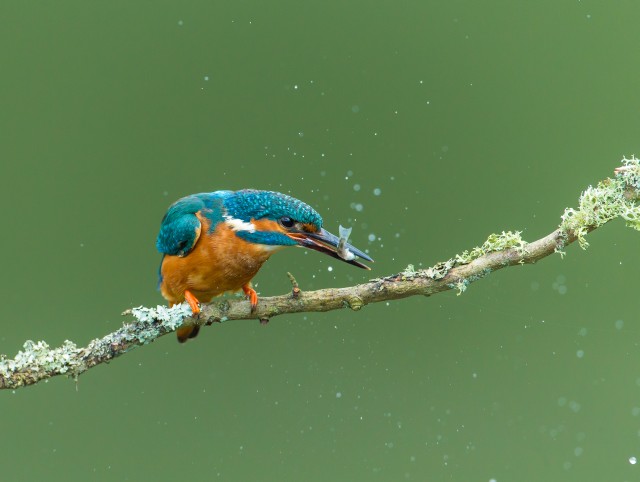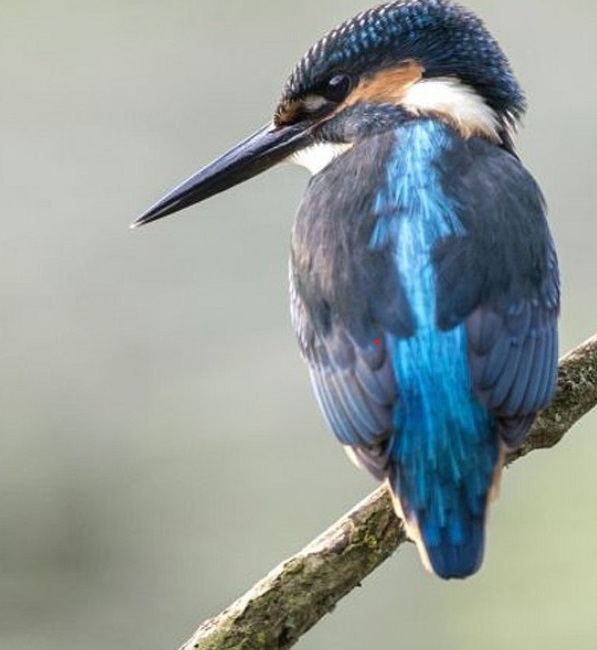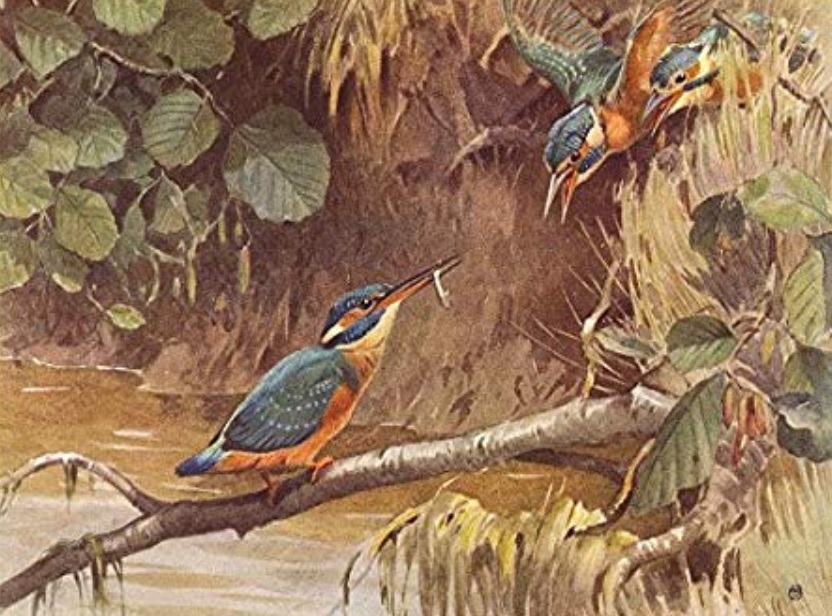The Kingfisher - An Exotic Royal in the Mid Arun Valley
 This year kingfishers have been spotted feeding and flying along the Arun and towards wet ditches near Tortington. They've also been seen by ponds in Binsted and in the Binsted Rife Valley. Unique in its exotic brilliance, it is an absolute treat to spot a kingfisher. Usually seen stock-still, perched on overhanging vegetation above water, it is the dazzling electric-blue feathers that catch the eye. Closer inspection will reveal orange-pink under parts, red legs and the seemingly over-sized dagger-like bill poised and ready for the kill. (Photo left: with thanks to Sussex Wildlife Trust and Steven Whitehead; below, SWT.)
This year kingfishers have been spotted feeding and flying along the Arun and towards wet ditches near Tortington. They've also been seen by ponds in Binsted and in the Binsted Rife Valley. Unique in its exotic brilliance, it is an absolute treat to spot a kingfisher. Usually seen stock-still, perched on overhanging vegetation above water, it is the dazzling electric-blue feathers that catch the eye. Closer inspection will reveal orange-pink under parts, red legs and the seemingly over-sized dagger-like bill poised and ready for the kill. (Photo left: with thanks to Sussex Wildlife Trust and Steven Whitehead; below, SWT.)
Kingfishers dive in clear still or slow-moving water, for aquatic activity must be plainly visible. Unsuspecting targets come in the form of fish such as sticklebacks, minnows, roach and trout, or invertebrates including dragonfly larvae and fresh-water shrimps. Virtually all that moves is a potential meal to satisfy the kingfisher’s voracious appetite – for this little bird must consume sixty per cent of its body weight each day just to survive.
 To guarantee this food supply, kingfishers are highly territorial and will fight off other birds to protect their disproportionately long stretch of a stream or river – frequently extending for one to three kilometres. Come the spring, birds pair up to breed, often with those occupying adjacent territories. A Kingfisher nest is unlike that of other birds, for it is simply a tunnel (60cm-90cm long) in the bank of a water body. Both birds excavate the tunnel with a nest chamber at the end – no fuss or frills in the form of a mossy interior or warm feather linings – just pure minimalism - bare walls.
To guarantee this food supply, kingfishers are highly territorial and will fight off other birds to protect their disproportionately long stretch of a stream or river – frequently extending for one to three kilometres. Come the spring, birds pair up to breed, often with those occupying adjacent territories. A Kingfisher nest is unlike that of other birds, for it is simply a tunnel (60cm-90cm long) in the bank of a water body. Both birds excavate the tunnel with a nest chamber at the end – no fuss or frills in the form of a mossy interior or warm feather linings – just pure minimalism - bare walls.
The first clutch of 6-7 eggs is laid late in March or early in April with one or two subsequent clutches in a season. Both adults incubate the eggs until the chicks hatch in 19-21 days. Each chick can eat 12-18 fish a day, and they are fed in orderly rotation - for once a chick is fed, it moves to the back of the nest to digest its meal causing the others to move forward. Despite order, the nest chamber soon becomes crowded with hatchlings and debris of cast pellets (the regurgitated, undigested parts of the diet) such as bones, shells and exoskeletons. The young remain in the nest for three to four weeks, after which they are soon left to fend for themselves and even driven out of the parent’s territory.
 Life for a newly fledged Kingfisher is extremely hazardous, for many will lack fishing skills and starve; others may succumb to waterlogged feathers and drown. Just a quarter live to breed, and some of these hardy survivors are in our territory – enhancing our lives with a splash of the exotic.
Life for a newly fledged Kingfisher is extremely hazardous, for many will lack fishing skills and starve; others may succumb to waterlogged feathers and drown. Just a quarter live to breed, and some of these hardy survivors are in our territory – enhancing our lives with a splash of the exotic.
And they bring us more than just exotic plumage. "Halcyon" is the Greek name for Kingfisher, so our "halcyon days", the epitome of youthful summer happiness, are "kingfisher days". And in older folklore Alcyone - the daughter of the keeper of the winds - had the power to calm rough and rising waters. We have reason to protect this magical bird and its habitats, now more than ever.
(Painting by C19-20 artist Winifred Austin)
